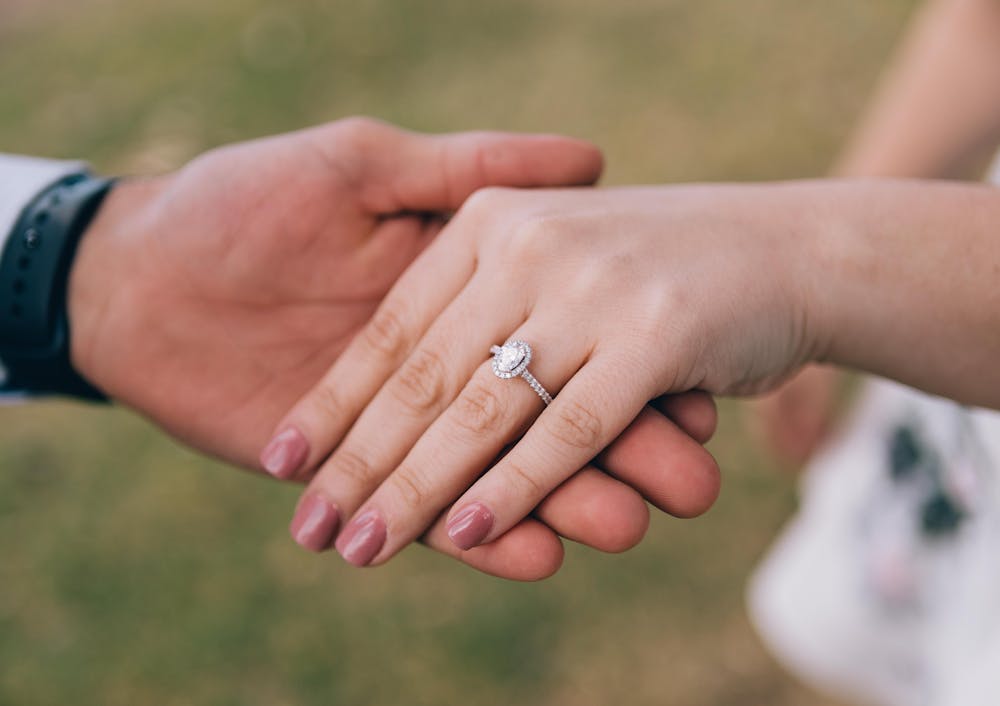Choosing the perfect engagement ring is a significant and exciting milestone. However, with so many options available, it can also be overwhelming. Understanding the fundamental aspects of engagement rings, known as the four Cs (cut, clarity, carat, and color), will help you make an informed decision. This guide will explore these four Cs in detail and offer additional tips to ensure you select a ring that your partner will cherish forever.
Understanding the Four Cs
The four Cs are the primary factors that determine the quality and value of a diamond. Each C plays a crucial role in the overall appearance and cost of the engagement ring.
Cut
The cut of a diamond refers to how well it has been shaped and faceted. The cut affects the diamond’s brilliance, fire, and overall sparkle. A well-cut diamond will reflect light beautifully, making it appear more radiant and lively.
Types of Cuts:
- Round Brilliant: The most popular and classic cut, known for its exceptional brilliance.
- Princess: A square cut with pointed corners, offering a modern and elegant look.
- Cushion: A square or rectangular cut with rounded corners, known for its vintage charm.
- Emerald: A rectangular cut with step facets, creating a sophisticated and understated appearance.
- Oval: An elongated round cut, which can make the finger appear longer and slimmer.
- Marquise: A unique, elongated cut with pointed ends, maximizing carat weight and giving the illusion of a larger diamond.
- Pear: A teardrop-shaped cut, combining the brilliance of a round cut with the elegance of a marquise.
Choosing the Right Cut: When choosing the cut, consider your partner’s style and preferences. If they prefer classic and timeless designs, a round brilliant or princess cut might be ideal. For those who love vintage or unique styles, a cushion, emerald, or pear cut could be the perfect choice.
Clarity
Clarity refers to the presence of internal or external flaws, known as inclusions and blemishes, respectively. The clarity grade ranges from Flawless (no inclusions or blemishes visible under 10x magnification) to Included (inclusions and/or blemishes visible to the naked eye).
Clarity Grades:
- Flawless (FL): No inclusions or blemishes visible under 10x magnification.
- Internally Flawless (IF): No inclusions visible under 10x magnification, only minor blemishes.
- Very Very Slightly Included (VVS1 and VVS2): Inclusions are difficult to see under 10x magnification.
- Very Slightly Included (VS1 and VS2): Inclusions are somewhat easy to see under 10x magnification but still minor.
- Slightly Included (SI1 and SI2): Inclusions are noticeable under 10x magnification and may be visible to the naked eye.
- Included (I1, I2, and I3): Inclusions are visible to the naked eye and may affect the diamond’s brilliance and durability.
Choosing the Right Clarity: While higher clarity grades are more valuable, they also come with a higher price tag. If you’re on a budget, consider diamonds in the VS or SI range, as inclusions in these grades are often not visible to the naked eye and do not significantly affect the diamond’s appearance.
Carat
Carat refers to the weight of the diamond. One carat is equivalent to 200 milligrams. While carat weight affects the size of the diamond, it is not the sole determinant of a diamond’s value. Two diamonds of equal carat weight can have different values based on their cut, clarity, and color.
Choosing the Right Carat: Consider your partner’s preferences and lifestyle when selecting carat weight. While larger diamonds are more impressive, they also tend to be more expensive. If your partner has an active lifestyle, a smaller, more practical diamond may be preferable. Additionally, keep in mind that a well-cut diamond can appear larger than its carat weight due to its brilliance and sparkle.
Color
Color in diamonds refers to the presence of any hue other than white. The Gemological Institute of America (GIA) color scale ranges from D (colorless) to Z (light yellow or brown). Colorless diamonds are the most valuable and rare, as they allow more light to pass through and reflect, creating more brilliance.
Color Grades:
- D-F: Colorless. These diamonds are extremely rare and highly valuable.
- G-J: Near colorless. Slight traces of color are detectable by an expert gemologist but appear colorless to the untrained eye.
- K-M: Faint color. Noticeable color can be seen with the naked eye, often appearing as a slight yellow hue.
- N-Z: Very light to light color. These diamonds have obvious color and are less valuable.
Choosing the Right Color: For most people, diamonds in the G-J range offer an excellent balance of quality and value. These diamonds appear colorless to the naked eye and are more affordable than those in the D-F range. Consider the setting as well, as certain metals can enhance or mask a diamond’s color. For example, yellow gold can make faint color less noticeable, while platinum or white gold settings are best for showcasing a colorless diamond.
Additional Tips for Choosing the Perfect Engagement Ring
Know Your Partner’s Style: Understanding your partner’s style and preferences is crucial in choosing the right engagement ring. Observe the jewelry they currently wear and take note of their style (classic, modern, vintage, minimalist, etc.). If you’re unsure, consider asking their close friends or family for insights.
Consider the Setting: The setting plays a significant role in the overall appearance of the engagement ring. Popular settings include:
- Prong: Classic and timeless, prong settings hold the diamond securely with metal prongs.
- Bezel: A modern and sleek setting that encircles the diamond with a thin metal rim.
- Halo: A setting where smaller diamonds surround the center stone, adding extra sparkle and making the center diamond appear larger.
- Pavé: Tiny diamonds are set close together along the band, creating a continuous sparkle.
- Three-Stone: Features three diamonds, symbolizing the past, present, and future.
Set a Budget: Determining your budget beforehand will help narrow down your options and ensure you find a ring within your price range. Remember that the four Cs will impact the price, so decide which factors are most important to you and your partner.
Consider Alternative Stones: While diamonds are the traditional choice for engagement rings, other gemstones like sapphires, emeralds, and rubies are becoming increasingly popular. These stones can add a unique and personal touch to the ring.
Shop with a Reputable Jeweler: Choose a reputable jeweler who offers certified diamonds and has a good return policy. Ensure that the diamond comes with a grading report from a recognized laboratory, such as the GIA or the American Gem Society (AGS).
Choosing the perfect engagement ring involves careful consideration of the four Cs: cut, clarity, carat, and color. Understanding these factors will help you make an informed decision and find a ring that your partner will love. Remember to consider your partner’s style, the setting, and your budget when selecting the ring.
Engagement rings are a symbol of love and commitment, so take your time and enjoy the process of finding the perfect one. By following this comprehensive guide, you’ll be well-equipped to choose an engagement ring that reflects your partner’s unique style and personality, ensuring it will be cherished for a lifetime.





